 Articles for children's care, learning and development.
Articles for children's care, learning and development.
|
The Nature of
Children's Play
This dated Preschool and Early Years article is a great
insight into children and their play ..
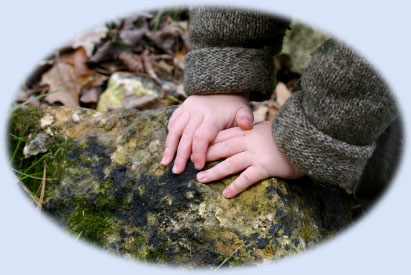
|
INTRODUCTION
|
|
In play, children expand their understanding of themselves
and others, their knowledge of the physical world, and their ability
to communicate with peers and adults.
This digest discusses children's play and its relationship
to developmental growth from infancy to middle childhood.
The digest also suggests ways in which educators
and other adults can support children's play.
Publication Date: 1988-00-00
Author: Fernie, David
Source: ERIC Clearinghouse on Elementary and Early
Childhood Education Urbana IL.
Sensorimotor
play
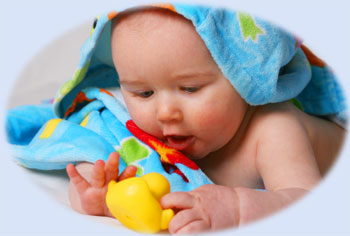
|
|
|
In what Piaget (1962) aptly described as sensorimotor practice
play, infants and toddlers experiment with bodily sensation and
motor movements, and with objects and people.
By 6 months of age, infants have developed simple but
consistent action schemes through trial and error and much practice.
Infants use action schemes, such as pushing and grasping,
to make interesting things happen.
An infant will push a ball and make it roll in order
to experience the sensation and pleasure of movement.
As children master new motor abilities, simple schemes
are coordinated to create more complex play sequences.
Older infants will push a ball, crawl after it, and
retrieve it.
When infants of 9 months are given an array of objects,
they apply the same limited actions to all objects and see how they
react.
By pushing various objects, an infant learns that a
ball rolls away, a bile spins, and a rattle makes noise.
At about 12 months, objects bring forth more specific
and differentiated actions. At this age, children will throw or
kick a ball, but will shake rattles.
In a toddler's second year, there is growing awareness
of the functions of objects in the social world.
The toddler puts a cup on a saucer and a spoon in her
mouth.
During the last half of this year, toddlers begin to
represent their world symbolically as they transform and invent
objects and roles.
They may stir an imaginary drink and offer it to someone
(Bergen, 1988). Adults initiate and support such play.
They may push a baby on a swing or cheer its first
awkward steps.
Children's responses regulate the adult's actions.
If the swing is pushed too high, a child's cries will
guide the adult toward a gentler approach.
In interactions with adults such as peekaboo, children
learn to take turns, act with others, and engage others in play.
|
Pretend play
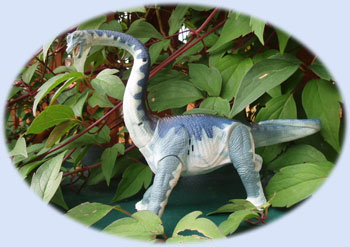
As children develop the ability
to represent experience symbolically, pretend play becomes a prominent
activity.
In this complex type of play, children carry out action
plans, take on roles, and transform objects as they express their
ideas and feelings about the social world (Garvey, 1984).
Action plans are blueprints for the ways in which actions and events
are related and sequenced.
Family-related themes in action plans are popular with
young children, as are action plans for treating and healing and
for averting threats.
Roles are identities children assume in play.
Some roles are functional: necessary for a certain
theme. For example, taking a trip requires passengers and a driver.
|
|
|
Family roles such as mother, father and baby are popular,
and are integrated into elaborate play with themes related to familiar
home activities.
Children also assume stereotyped character roles drawn
from the larger culture, such as nurse, and fictional character
roles drawn from books and television, such as He-Man.
Play related to these roles tends to be more predictable
and restricted than play related to direct experiences such as
family life (Garvey, 1984).
As sociodramatic play emerges, objects begin to influence
the roles children assume.
For example, household implements trigger family-related
roles and action plans, but capes stimulate superhero play.
Perceptually bound younger children may be aided by
the provision of realistic objects (Fein, 1981). Even three-year-olds
can invent and transform objects to conform to plans.
By the age of four or five, children's ideas about the social world
initiate most pretend play.
While some pretend play is solitary or shared with
adults, preschoolers' pretend or sociodramatic play is often shared
with peers in the school or neighborhood.
To implement and maintain pretend play episodes, a
great deal of shared meaning must be negotiated among children.
Play procedures may be talked about explicitly, or
signaled subtly in role-appropriate action or dialogue.
Players often make rule-like statements to guide behavior
("You have to finish your dinner, baby").
Potential conflicts are negotiated.
Though meanings in play often reflect real world behavior,
they also incorporate children's interpretations and wishes.
The child in a role who orders a steak and piece of
candy from a pretend menu is not directly copying anything he has
seen before.
Construction play with symbolic themes is also popular
with preschoolers, who use blocks and miniature cars and people
to create model situations related to their
experience.
A kind of play with motion, rough and tumble play,
is popular in preschool years. In this play, groups of children
run, jump, and wrestle.
Action patterns call for these behaviors to be performed
at a high pitch.
Adults may worry that such play will become aggressive,
and they should probably monitor it.
Children who participate in this play become skilled
in their movements, distinguish between real and feigned aggression,
and learn to regulate each other's activity (Garvey, 1984).
|


Games
with rules
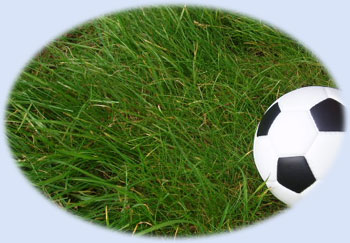
|
Children become interested in formal
games with peers by age five or younger.
Older children's more logical and socialized ways of
thinking make it possible for them to play games together.
Games with rules are the most prominent form of play
during middle childhood (Piaget, 1962).
The main organizing element in game play consists of
explicit rules which guide children's group behavior.
Game play is very organized in comparison to sociodramatic
play.
Games usually involve two or more sides, competition,
and agreed-upon criteria for determining a winner.
Children use games flexibly to meet social and intellectual
needs. For example, choosing sides may affirm friendship and a pecking
order.
Games provide children with shared activities and goals.
Children often negotiate rules in order to create the game they
wish to play (King, 1986).
They can learn reasoning strategies and skills from
strategy games like checkers. In these games, children must consider
at the same time both offensive alternatives and the need for defense.
Many card games encourage awareness of mathematics
and of the psychology of opponents.
Such games can be intellectually motivating parts of
pre- and primary school curriculum (Kamii & DeVries, 1980,
Kamii, 1985).
|


The role
of adults in children's play
|
These
general guidelines may be helpful:

Value children's play and talk to children about
their play.
 Play with children when it is appropriate, especially
during the early years. If adults pay attention to and engage in
children's play, children get the message that play is valuable.
Play with children when it is appropriate, especially
during the early years. If adults pay attention to and engage in
children's play, children get the message that play is valuable.

Create a playful atmosphere. It is important for adults
to provide materials which children can explore and adapt in play.
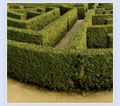
When play appears to be stuck or unproductive,
offer a new prop, suggest new roles, provide new experiences,
such as a field trip.

Adults can help when children cannot solve these conflicts
by themselves (Caldwell, 1977).
Intervene to ensure safe play. Even in older children's
play, social conflicts often occur when children try to negotiate.
Adults should identify play which has led to problems for particular
children.
They should check materials and equipment for safety.
Finally, adults should make children aware of any hidden
risks in physical challenges they set for themselves.
FOR GENERAL INFORMATION
|




|
FOR MORE INFORMATION
Bergen, D. (1988). PLAY AS A MEDIUM FOR LEARNING AND
DEVELOPMENT. Portsmouth, NH: Heinemann.
Caldwell, B. (1977). "Aggression and Hostility in
Young Children." YOUNG CHILDREN, 32, pp. 4-13.
Fein, G. (1981). "Pretend Play in Childhood: An Integrative
Review." CHILD DEVELOPMENT, 52, pp. 1095-1118.
Garvey, C. (1977). PLAY. Cambridge, MA: Harvard University
Press.
Kamii, C. (1985). YOUNG CHILDREN INVENT ARITHMETIC:
IMPLICATIONS OF PIAGET'S THEORY. New York: Teachers College Press.
Kamii, C., & DeVries, R. (1980). GROUP GAMES IN
EARLY EDUCATION: IMPLICATIONS OF PIAGET'S THEORY. Washington,
DC: National Association for the
King, N. (1986). "Play and the Culture of Childhood."
In G. Fein & M. Rivkin (Eds.), THE YOUNG CHILD AT PLAY. Washington,
DC: National Association for the Education of Young Children.
Piaget, J. (1962). PLAY, DREAMS, AND IMITATION IN
CHILDHOOD. New York: Norton.
--------
THIS DIGEST WAS CREATED BY ERIC, THE EDUCATIONAL RESOURCES
INFORMATION CENTER. FOR MORE INFORMATION ABOUT ERIC,
CONTACT
ACCESS ERIC 1-800-LET-ERIC
www.eric.ed.gov
This publication was prepared with funding from the
Office of Educational Research and Improvement, U.S. Department
of Education, under OERI contract.
The opinions expressed in this report do not necessarily
reflect the positions or policies of OERI or the Department of
Education.
Title: The Nature of Children's Play. ERIC Digest.
Document Type: Information Analyses---ERIC Information
Analysis Products (IAPs)
(071); Information Analyses---ERIC Digests (Selected)
in Full Text (073);
Descriptors: Children, Childrens Games, Developmental
Stages, Guidelines, Infants,
Parent Role, Play, Pretend Play, Sensory Experience,
Teacher Role, Toddlers
Identifiers: ERIC Digests
###
ERIC Resource Center www.eric.ed.gov
-------------------------------
Image credits:
Child
and watercan iStock ©Lesley Banks
Hands
on rocks iStock ©Parker Deen
Sensorimotory play © Chris Parypa
Pretend
play dinosaur ©Silkysteps
Games with rules ©Silkysteps
Value play iStock © Maxim Bolotnikov
Play hands on eyes iStock ©Rosemarie Gearhart
Resolve conflict © Olga Solovei
Maze
© Phooey
|
|

|
|

